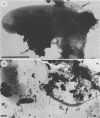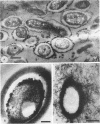Abstract
The concept of disposal of nuclear fuel waste in crystalline rock requires the effects of microbial action to be investigated. The Underground Research Laboratory excavated in a pluton of the Canadian Shield provides a unique opportunity to study these effects. Three biofilms kept moist by seepage through fractures in granitic rock faces of the Underground Research Laboratory have been examined. The biofilms contained a variety of gram-negative and gram-positive morphotypes held together by an organic extracellular matrix. Nutrient levels in the groundwater were low, but energy-dispersive X-ray spectroscopy has shown biogeochemical immobilization of several elements in the biofilms; some of these elements were concentrated from extremely dilute environmental concentrations, and all elements were chemically complexed together to form amorphous or crystalline fine-grained minerals. These were seen by transmission electron microscopy to be both associated with the surfaces of the bacteria and scattered throughout the extracellular matrix, suggesting their de novo development through bacterial surface-mediated nucleation. The biofilm consortia are thought to concentrate elements both by passive sorption and by energy metabolism. By Mössbauer spectroscopy and X-ray diffraction, one of the biofilms showed that iron was both oxidized and precipitated as ferrihydrite or hematite aerobically and reduced and precipitated as siderite anaerobically. We believe that some Archean banded-iron formations could have been formed in a manner similar to this, as it would explain the deposition of hematite and siderite in close proximity. This biogeochemical development of minerals may also affect the transport of material in waste disposal sites.
Full text
PDF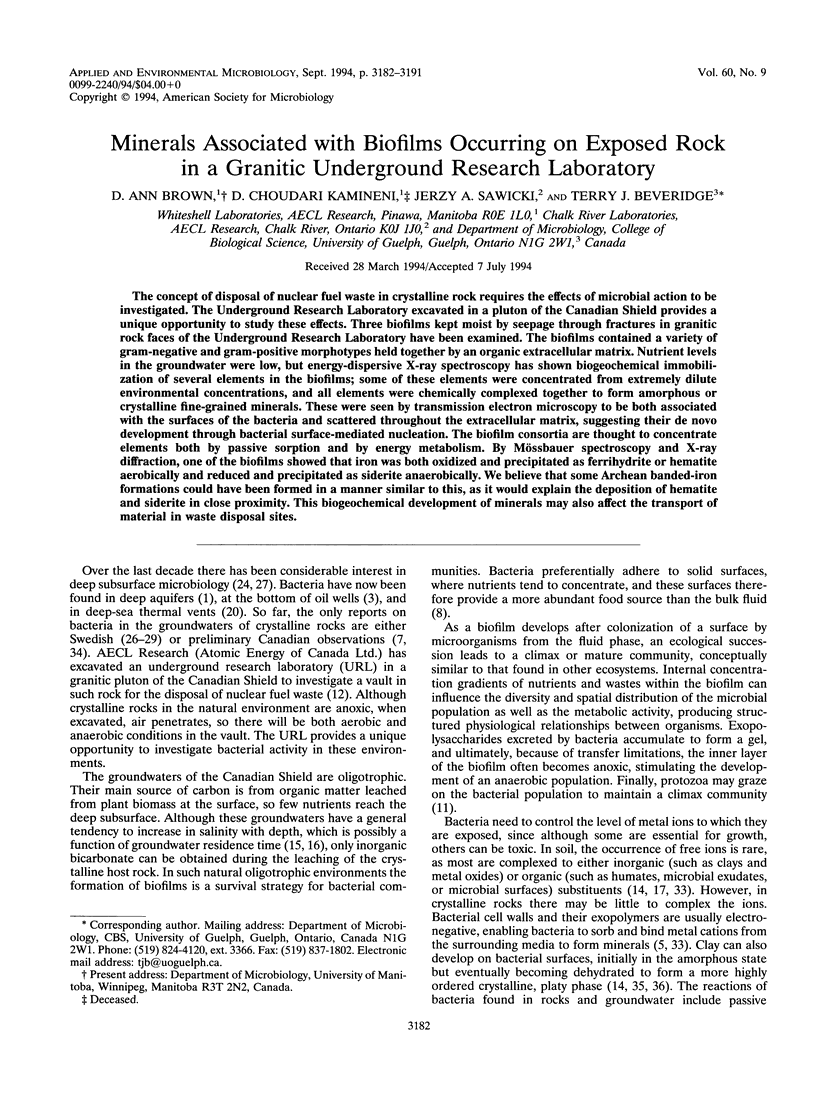
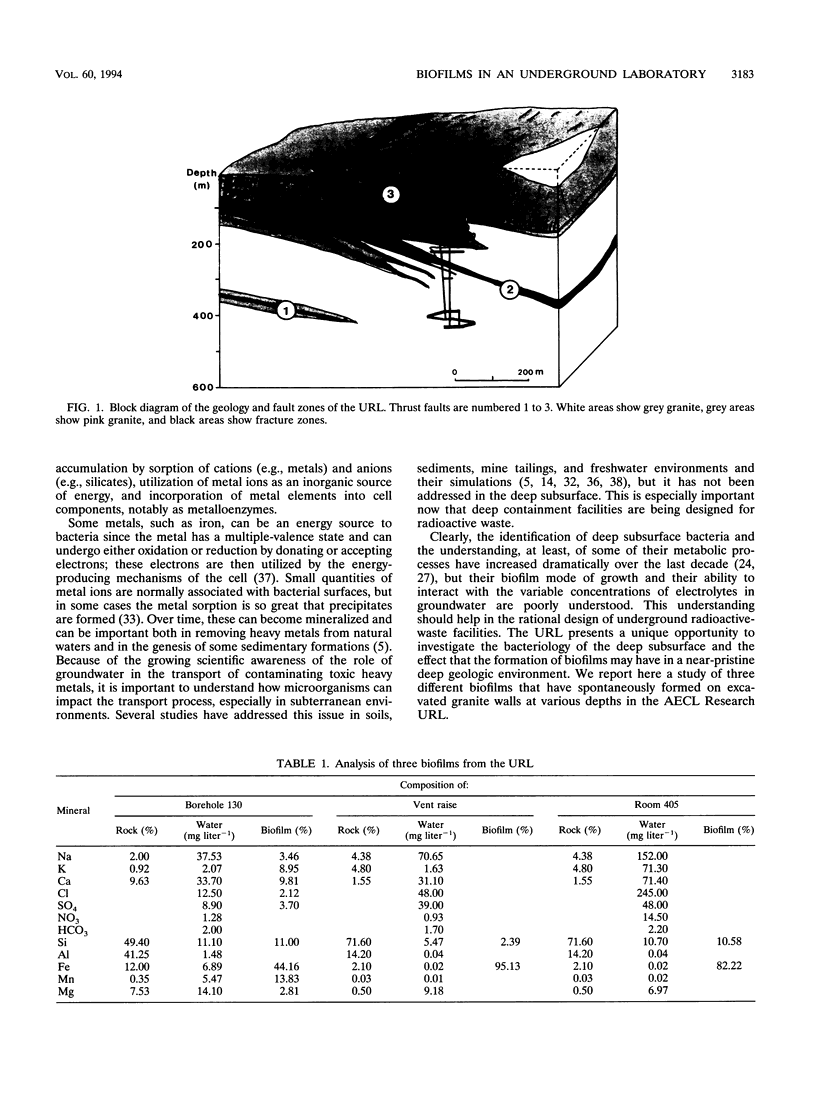
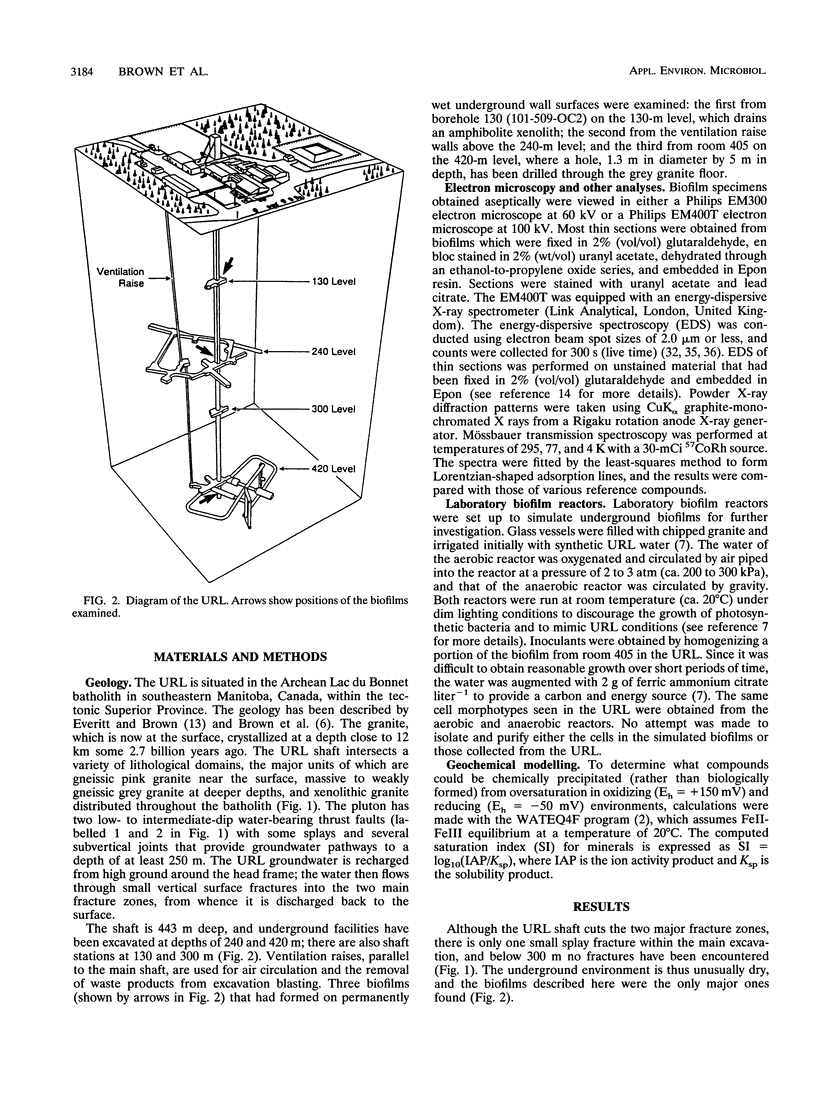
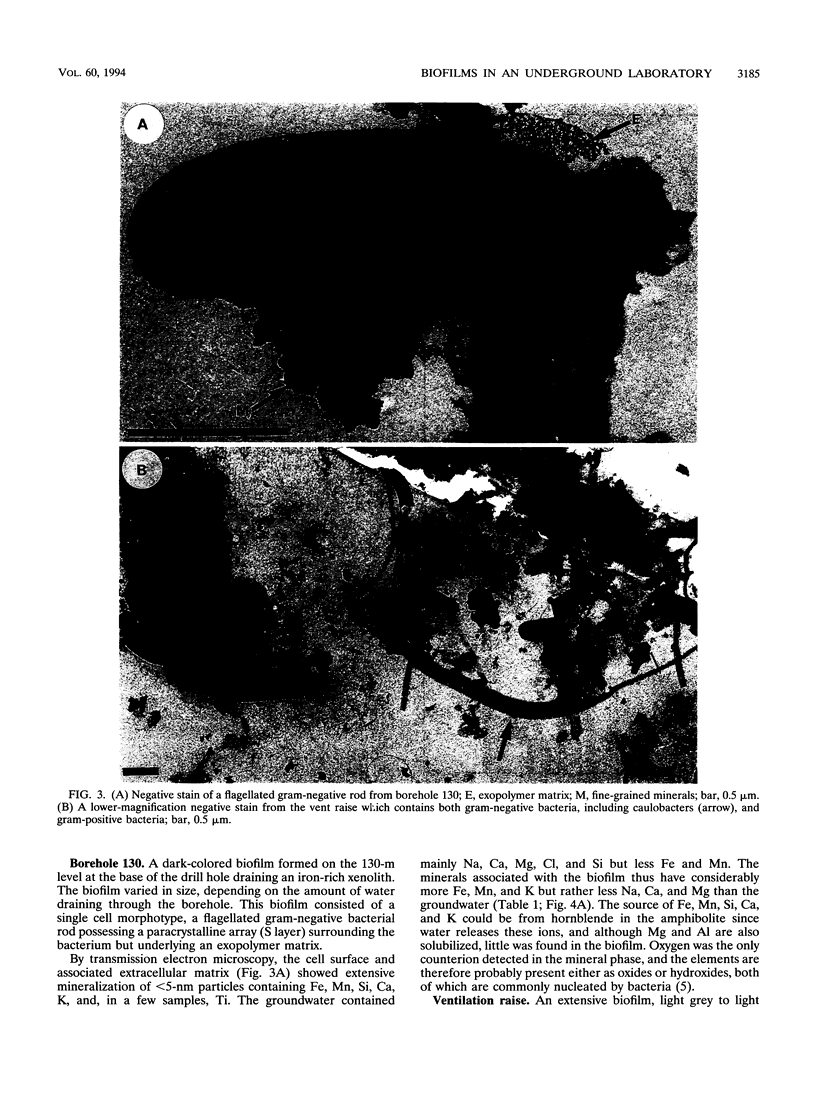
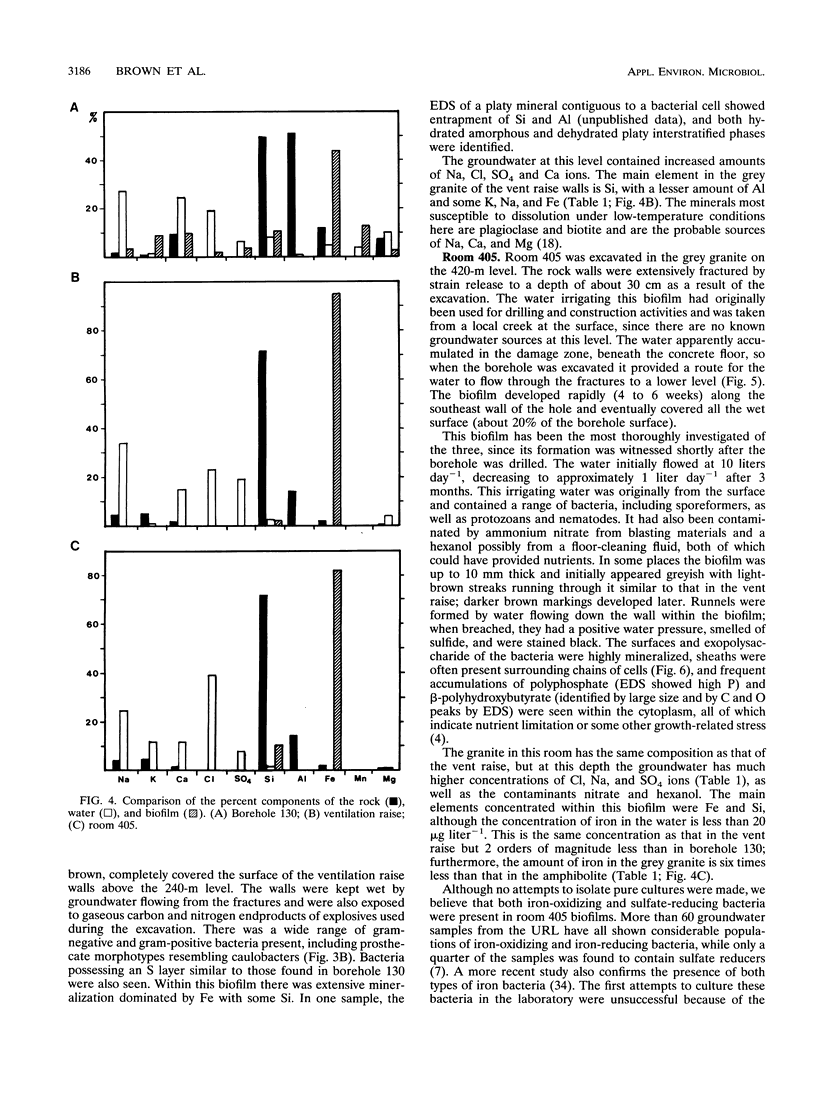
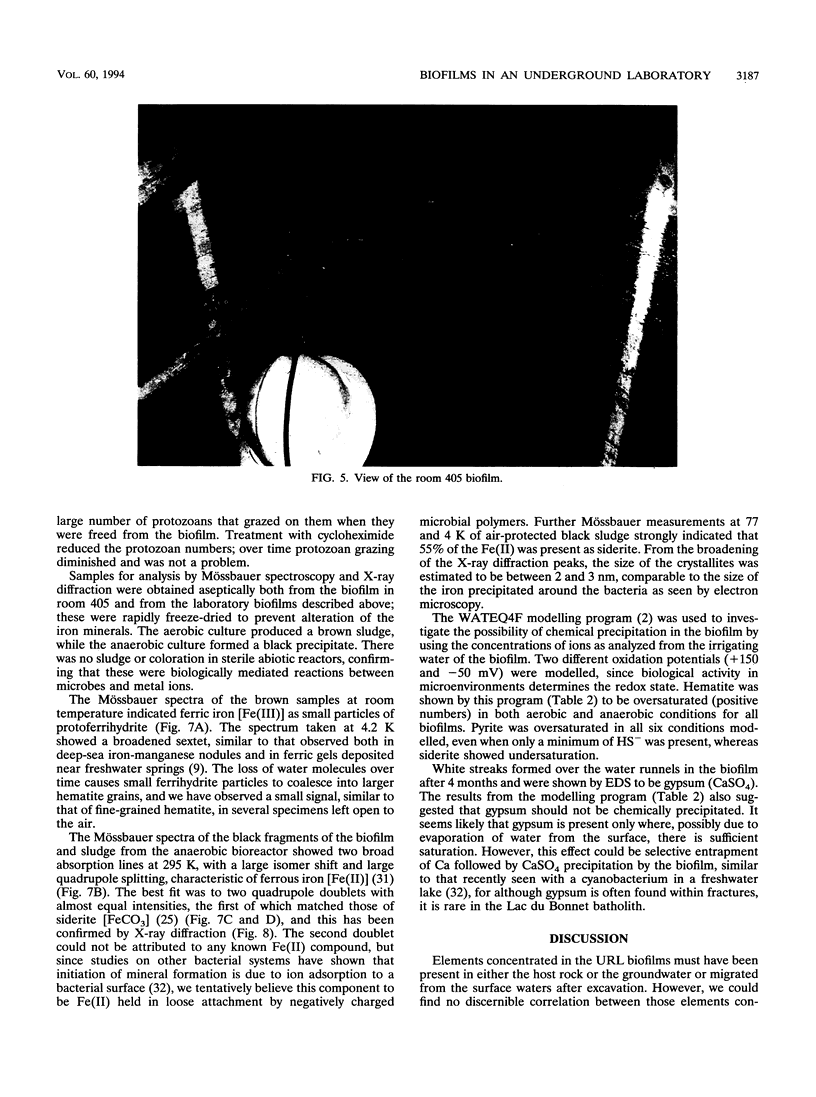
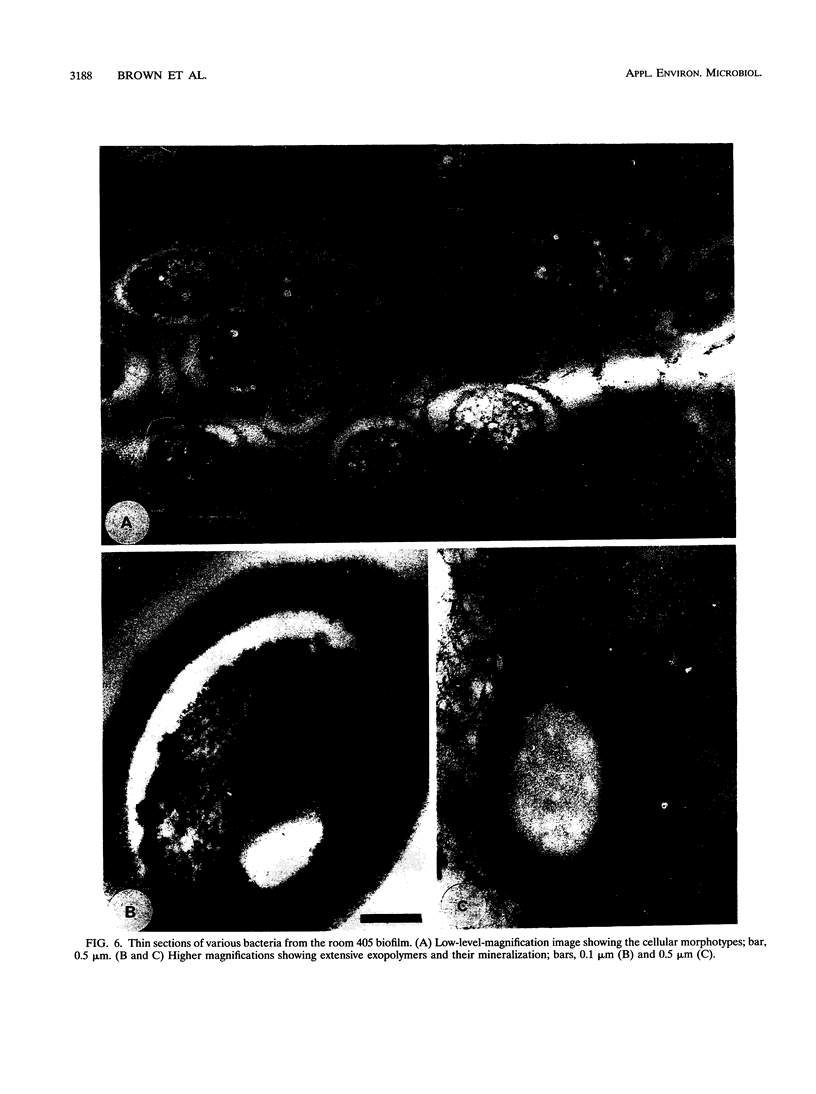
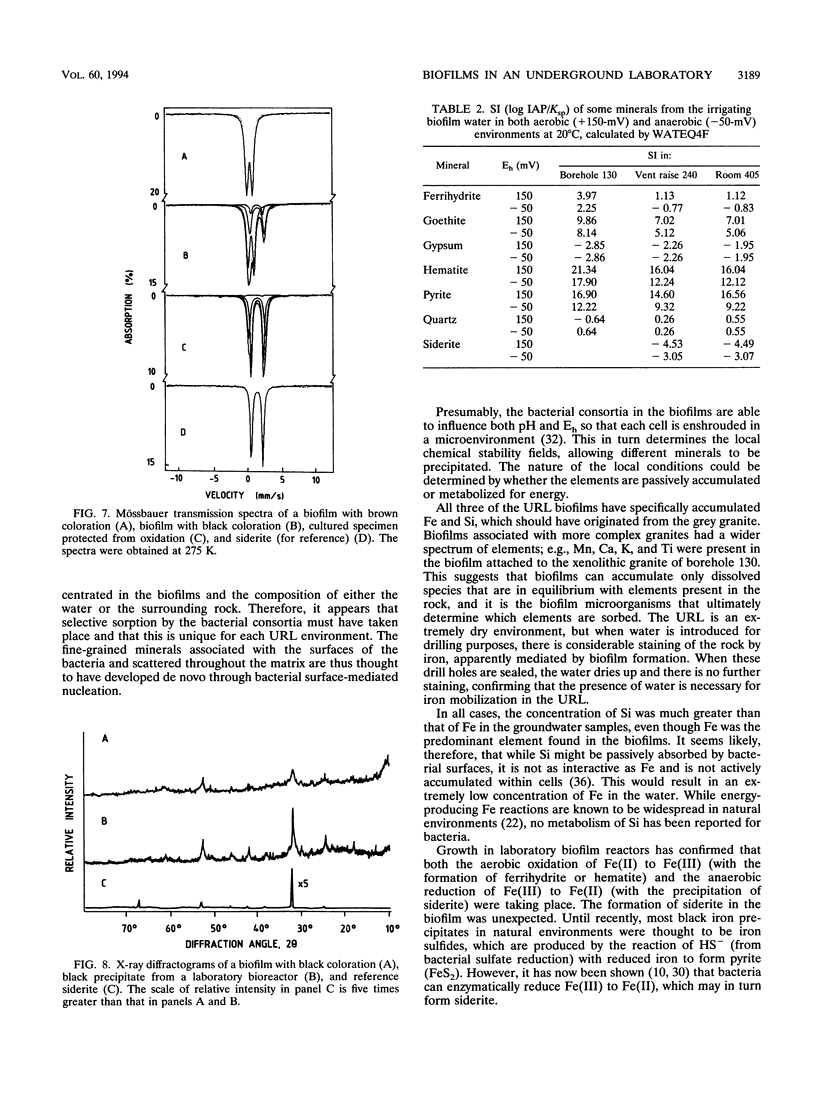
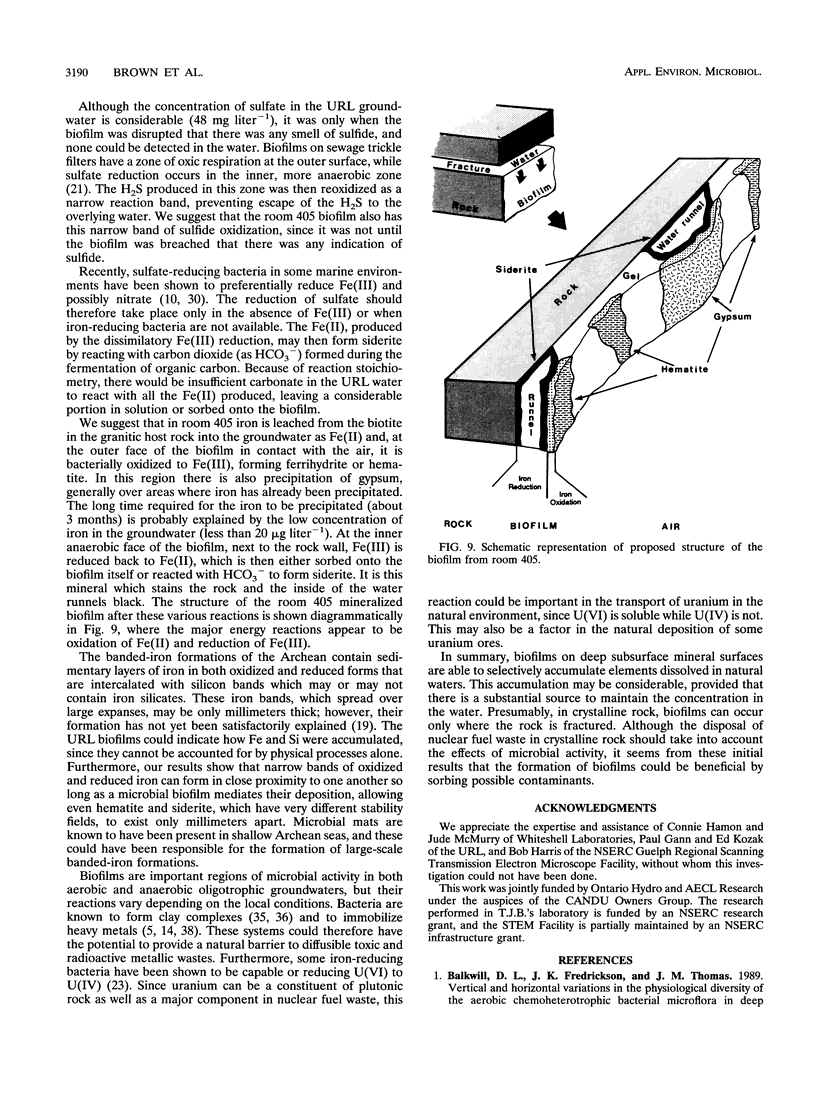
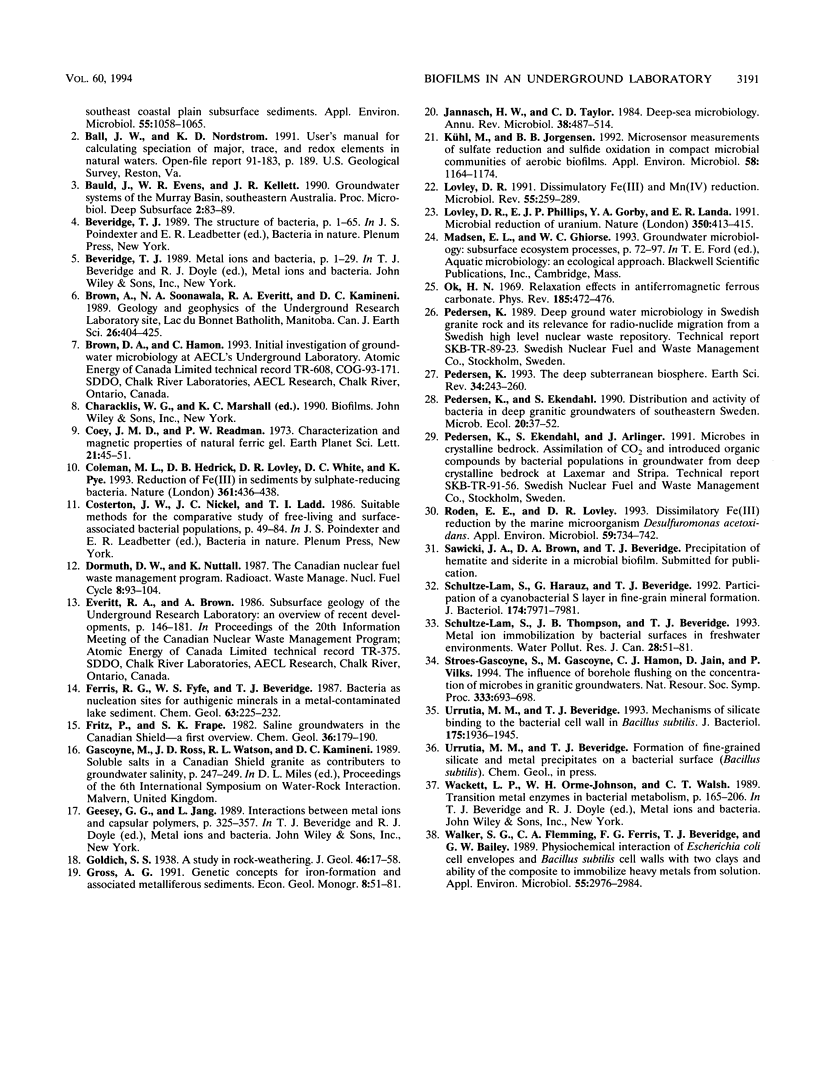
Images in this article
Selected References
These references are in PubMed. This may not be the complete list of references from this article.
- Balkwill D. L., Fredrickson J. K., Thomas J. M. Vertical and horizontal variations in the physiological diversity of the aerobic chemoheterotrophic bacterial microflora in deep southeast coastal plain subsurface sediments. Appl Environ Microbiol. 1989 May;55(5):1058–1065. doi: 10.1128/aem.55.5.1058-1065.1989. [DOI] [PMC free article] [PubMed] [Google Scholar]
- Jannasch H. W., Taylor C. D. Deep-sea microbiology. Annu Rev Microbiol. 1984;38:487–514. doi: 10.1146/annurev.mi.38.100184.002415. [DOI] [PubMed] [Google Scholar]
- Kühl M., Jørgensen B. B. Microsensor measurements of sulfate reduction and sulfide oxidation in compact microbial communities of aerobic biofilms. Appl Environ Microbiol. 1992 Apr;58(4):1164–1174. doi: 10.1128/aem.58.4.1164-1174.1992. [DOI] [PMC free article] [PubMed] [Google Scholar]
- Lovley D. R. Dissimilatory Fe(III) and Mn(IV) reduction. Microbiol Rev. 1991 Jun;55(2):259–287. doi: 10.1128/mr.55.2.259-287.1991. [DOI] [PMC free article] [PubMed] [Google Scholar]
- Mera M. U., Beveridge T. J. Mechanism of silicate binding to the bacterial cell wall in Bacillus subtilis. J Bacteriol. 1993 Apr;175(7):1936–1945. doi: 10.1128/jb.175.7.1936-1945.1993. [DOI] [PMC free article] [PubMed] [Google Scholar]
- Roden E. E., Lovley D. R. Dissimilatory Fe(III) Reduction by the Marine Microorganism Desulfuromonas acetoxidans. Appl Environ Microbiol. 1993 Mar;59(3):734–742. doi: 10.1128/aem.59.3.734-742.1993. [DOI] [PMC free article] [PubMed] [Google Scholar]
- Schultze-Lam S., Harauz G., Beveridge T. J. Participation of a cyanobacterial S layer in fine-grain mineral formation. J Bacteriol. 1992 Dec;174(24):7971–7981. doi: 10.1128/jb.174.24.7971-7981.1992. [DOI] [PMC free article] [PubMed] [Google Scholar]
- Walker S. G., Flemming C. A., Ferris F. G., Beveridge T. J., Bailey G. W. Physicochemical interaction of Escherichia coli cell envelopes and Bacillus subtilis cell walls with two clays and ability of the composite to immobilize heavy metals from solution. Appl Environ Microbiol. 1989 Nov;55(11):2976–2984. doi: 10.1128/aem.55.11.2976-2984.1989. [DOI] [PMC free article] [PubMed] [Google Scholar]




